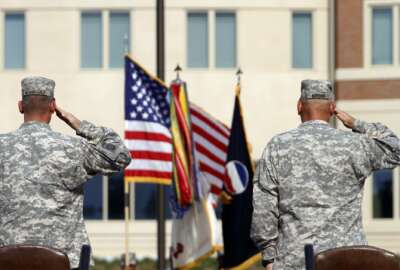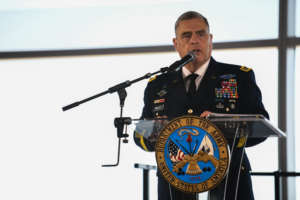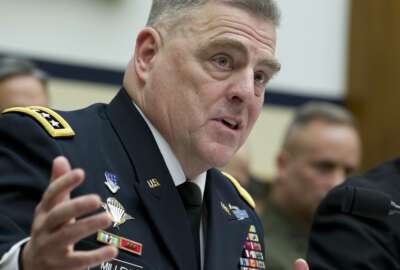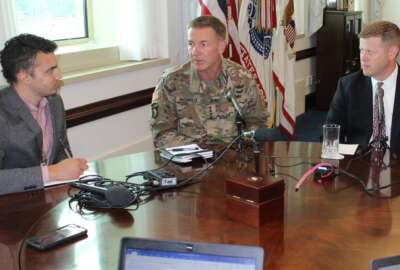
Army: New Austin Futures Command was McCain’s idea
Army Futures Command only came about because of Sen. John McCain's insistence that the Army fix its modernization problems, service leaders said.

During last week’s formal activation ceremony for the Army’s new Futures Command — held, coincidentally, just 24 hours before the death of Sen. John McCain (R-Ariz.) — Army leaders disclosed something about the command’s origins not yet publicly discussed.
The senator himself played an instrumental role in the command’s creation, starting more than two years before officials publicly announced their plans to stand it up, they said.
“None of this would be happening without someone who’s not here today, and that’s Sen. John McCain, an American hero,” Gen. Mark Milley, the Army’s chief of staff said at the Austin ceremony on Friday.
Milley went so far as to characterize the creation of AFC – which the Army calls its most significant reorganization since Vietnam – as “Senator McCain’s idea.”
Although the new four-star command took more than two years to plan and design, with deep involvement by the service’s most senior leaders, Milley recalled that the genesis was a private meeting he had with McCain, the chairman of the Senate Armed Services Committee, just before his Aug. 2015 confirmation hearing to become Army chief.
“He talked to me about a lot of the problems and challenges he thought the Army had in the area of acquisition, procurement, science, technology, research, development, modernization, and all of those things,” Milley told reporters later. “And he said, ‘You really have some significant challenges here, and I want you to think about how you’re going to reform the Army.’ I wasn’t the first person he ever told that to, but I was on the eve of confirmation. I said, ‘Oh, I’d better be paying attention to this guy, because this is the guy who’s either going to confirm you or not.’”
Milley said the planning efforts for AFC included months of quiet, ongoing conversations with McCain about how the command would be structured and how the Army could solve some of its procurement challenges by moving its modernization functions “under one roof.” Those plans were eventually revealed to the public in October 2017.
There were times during the planning process when the idea of a new modernization command appeared to have ground to a halt, in part because of a lack of political appointees within the Army who could champion the idea, according to Gen. John Murray, who became AFC’s first commander on Friday.
But Ryan McCarthy received Senate confirmation as undersecretary of the Army in August 2017, and quickly got behind it. So did Mark Esper, the secretary of the Army, when he was confirmed in November.
“I really thought that it was dead,” Murray said. “We worked very hard for about a year on it, and then Gen. Milley just quit mentioning it. But sir, I think you were really waiting for the right political leadership, and I believe the right political leadership arrived. You very quickly gained the backing of Secretary Esper and then really the muscle and the horsepower of the dynamic duo: the undersecretary and [Vice Chief of Staff] Gen. [James] McConville that really drove this home. And none of it would have been possible without Senator McCain and entire congressional support.
Two senior staff members from McCain’s office also attended the ceremony, which was held just an hour after the senator’s family announced he would be discontinuing medical treatment.
John Cornyn, the senior senator from Texas, also noted McCain’s role.
“I wish he could be here, because I know that he was key,” Cornyn said. “I know he would love to be here and be pleased.”
Read more of the DoD Reporter’s Notebook.
Copyright © 2025 Federal News Network. All rights reserved. This website is not intended for users located within the European Economic Area.
Jared Serbu is deputy editor of Federal News Network and reports on the Defense Department’s contracting, legislative, workforce and IT issues.
Follow @jserbuWFED
Related Stories





